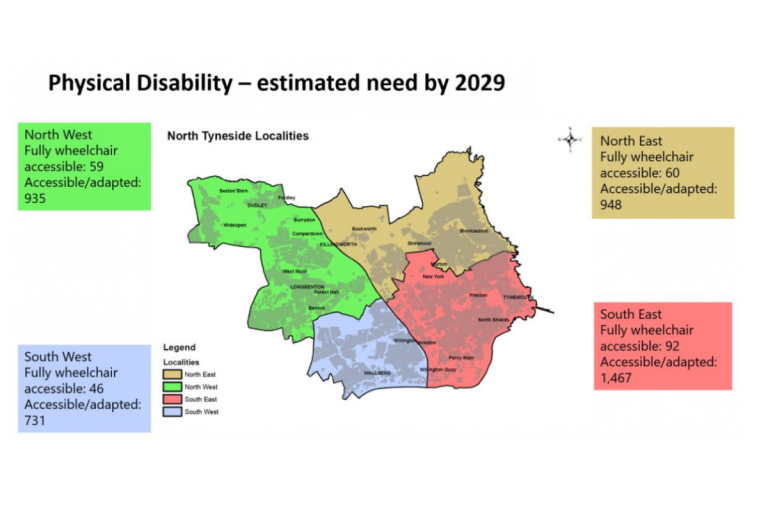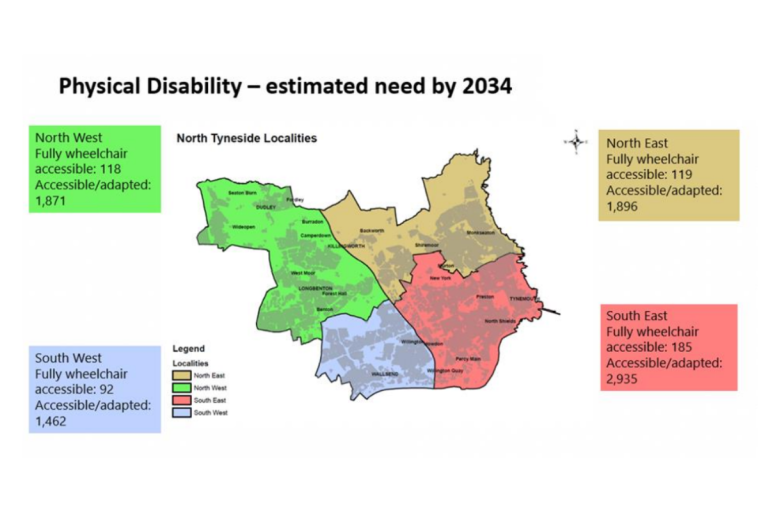Accessible housing for people with physical disability/long term condition
8.1 Headlines
- There is an estimated c.4,675 adults of working age with a physical disability and/or sensory disability that are eligible for and receiving a funded support package from North Tyneside Council.
- It is assumed that this cohort of working-age people will be more likely to need an accessible/adapted home (if they don’t already live in such a dwelling) rather than supported housing
8.2 What local people are seeking
The majority of people with a physical disability would typically prefer to live in adapted mainstream housing with any care/support they require rather than in specialist/supported housing.
People are seeking properties that are a ‘home for life’ and enable them to live there as long as possible.
The majority of adaptations required for adults with a physical disability are grabrails, ramps and level access showers.
People are also seeking improved access to adaptations that enable them to stay in their current homes. For example, through a better understanding of and access to Disabled Facilities Grants.
People with a physical disability are often seeking larger properties as they need space to store equipment and some people may need an extra bedroom for an overnight carer as well as level access requirements.
Living in areas with good access to shops, amenities and support services is important.
8.3 Housing priorities
There is an increase in people seeking aids and adaptations and wheelchair adapted properties.
There is a need for additional bungalow accommodation to be developed as part of the mix of housing types on general needs housing development sites.
There is a need to make available respite accommodation for some people with a physical disability/long term condition.
There is a need for some adapted housing suited to people with bariatric needs.
There is an ongoing need for housing adapted to both M4(2) and M4(3) standards.
8.4 Evidence of need and the Council's commissioning intentions
- In summary, the Council’s requirement for accessible homes by 2034 are:
- c.8,165 accessible and adaptable homes (i.e. not fully wheelchair adapted dwellings), similar to Part M(4) Category 2, broadly equivalent to the Lifetime Homes standard.
- This is the equivalent of a need for c.816 accessible and adaptable homes required per year to 2034 for the all-age population.
- Among the working-age population, this is the equivalent of a need for c.327 accessible and adaptable homes required per year to 2034.
- c.515 fully wheelchair adapted homes, i.e. similar to Part M(4) Category 3 broadly equivalent to the Wheelchair Housing Design standard.
- This is the equivalent of a need for c.51 fully wheelchair-adapted homes required per year to 2034, for the all-age population.
- For the working age population, this is the equivalent of a need for c.21 fully wheelchair-adapted homes required per year to 2034.
The map below indicates the estimated need by North Tyneside Locality by 2029 and 2034.


t is anticipated that estimated need for accessible homes would be met through a mix of adaptations to existing homes (both self-funded and funded through Disabled Facilities Grants) and from new build housing built to M4(2) and M4(3) standards.
In addition, new extra care housing developments would meet a proportion of the need for fully wheelchair adapted homes to 2034.
